Even though the most spectacular forms of entertainment in ancient Rome were gladiator fights in Roman Amphitheaters and chariot races in huge stadiums, another popular pastime for Romans was spent quite differently.
These Roman bathhouses were a lot more than merely a facility to take a bath. Many of these large-scale complexes included places to socialize or work out, and some even featured a library.
Just about every ancient Roman city had at least one “Thermae” or “Balneae,” so the people living there could unwind. Thermae s the name used for huge bathing complexes while Balneae is the name of smaller, public, or even private facilities.
Let’s take a closer look at some of these remarkable structures of which the ruins are today scattered all over parts of Europe, Africa, and Asia.
1. Baths of Caracalla – Rome, Italy
The Baths of Caracalla were named as such in honor of the Roman Emperor Caracalla (188-217 A.D.), the man who was in charge when the baths were completed.
The construction already started during the reign of his father Septimius Severus, most probably between 211 and 216 A.D. (even though the exact dates are uncertain).
Even though the construction period of 5 years seems like a lot, this facility in Rome was enormous. It was to be the second-largest bathing complex ever constructed in the Roman Empire.
The building had a height of approximately 40 meters (130 feet) and the baths had a volume of 8 million liters (2.1 million US Gallons).

2. Baths of Diocletian – Rome, Italy
The Baths of Diocletian were built around a century later in a construction project that lasted between 298 and 306 A.D. These were built during the reign of Emperor Diocletian, infamously known for his horrible persecution of Christians during the early 4th century.

Remarkably, Diocletian neither commissioned the baths in Rome as his predecessor Maximian did nor did he reign when they were completed (he voluntarily resigned).
During this period, the largest ancient Roman bathhouses were completed, capable of holding approximately 3,000 bathers at any given time. Just like the Baths of Caracalla, they were operational until the aqueducts that supplied these structures were destroyed in 537 A.D.
Today, part of the bathing complex was transformed into a church called the Santa Maria degli Angeli e dei Martiri. This church was designed by Michelangelo in the 16th century and remarkably built inside the ruins of this bathhouse.

3. Roman Baths – Bath, England
What are the odds that the city of Bath in Somerset, England, was named after the Roman Baths that are located here, right? Well, it was, and this ancient Roman bathing facility has been remarkably well-preserved as well.
This is especially remarkable because they were around 60-70 A.D., the first few decades of Roman rule in Britain. They also remained operational until the final years of Roman rule in the 5th century A.D., quite an amazing track record.
Just a century later, the baths lay in ruins and were gradually rebuilt during the Middle Ages. The facility consists of 4 sections today, including the Sacred Spring, the Roman Temple, the Roman Bath House, and a museum with Roman artifacts.
It’s one of the most popular tourist attractions in the region and receives well over 1 million visitors every year.
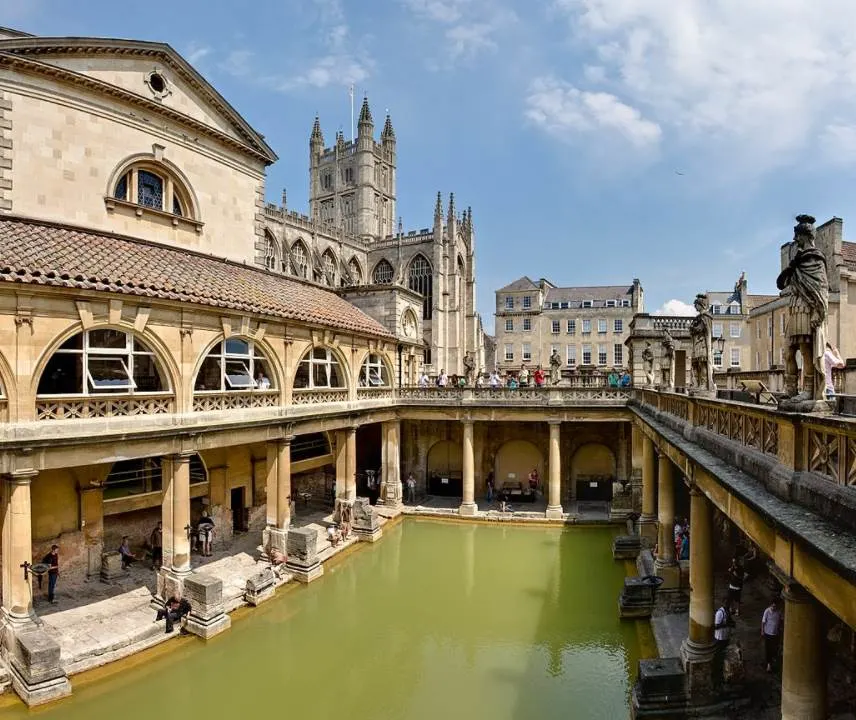
4. Trier Imperial Baths – Trier, Germany
The modern-day city of Trier in the southwestern part of Germany was once one of the largest cities of the Roman Empire. After Diocletian reformed the EMpire, it became the city that oversaw much of the Western Roman Empire.
At its peak in the 4th century, it’s estimated that the city of “Augusta Treverorum” had a population of anywhere between 75,000 and 100,000 inhabitants, which meant it had all the facilities needed to entertain these people.
This also meant that the Imperial Baths of Trier and the nearby Barbara Baths were some of the largest built outside of Rome, even though only a fraction of the complex remains today.
Together with the Moselle Bridge, the Porta Nigra, and the Amphitheater, they are included in a list of 9 monuments in the city of Trier as a UNESCO World Heritage site.

5. Thermes de Cluny – Paris, France
The Thermes de Cluny are other thermal baths located in Lutetia, the Roman name of Modern-day Paris. These are situated right in the heart of the city in the 5th arrondissement.
Not too much is known about the construction of these baths but it’s assumed they were built in the first part of the 3rd century A.D. The remains of today are about 1/3 of the original bathing complex.
What’s remarkable is that part of this complex has been incorporated into a modern-day attraction called the “Musée national du Moyen Age,” which translates to the “National Museum of the Middle Ages.”
This means that you can admire medieval artifacts right inside what used to be a Roman bathhouse, which is quite amazing.
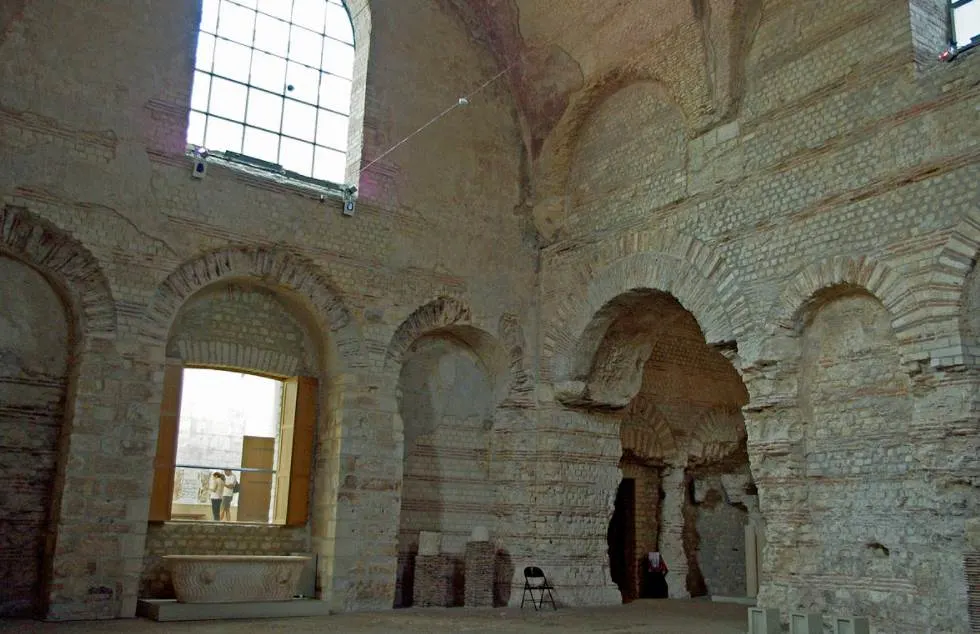
6. Baths of Antoninus – Tunis, Tunisia
The Baths of Antoninus were the largest Roman Bathhouse built on the African continent. It was constructed in one of the most important cities of the Roman province of Africa, Carthage, just east of Lake Tunis in the modern-day capital of Tunisia.
The baths were constructed during the reign of Antoninus Pius between 145 and 162 A.D., not too far from the presidential palace of Tunisia today.
The complex was built at a monumental scale because Carthage was one of the most important trading hubs in the Mediterranean. By the third century A.D., Carthage was one of the biggest cities in the Roman Empire with hundreds of thousands of inhabitants.
The ruins of the baths are part of the Archaeological site of Carthage, a section that was declared a UNESCO World Heritage site as early as the year 1979.
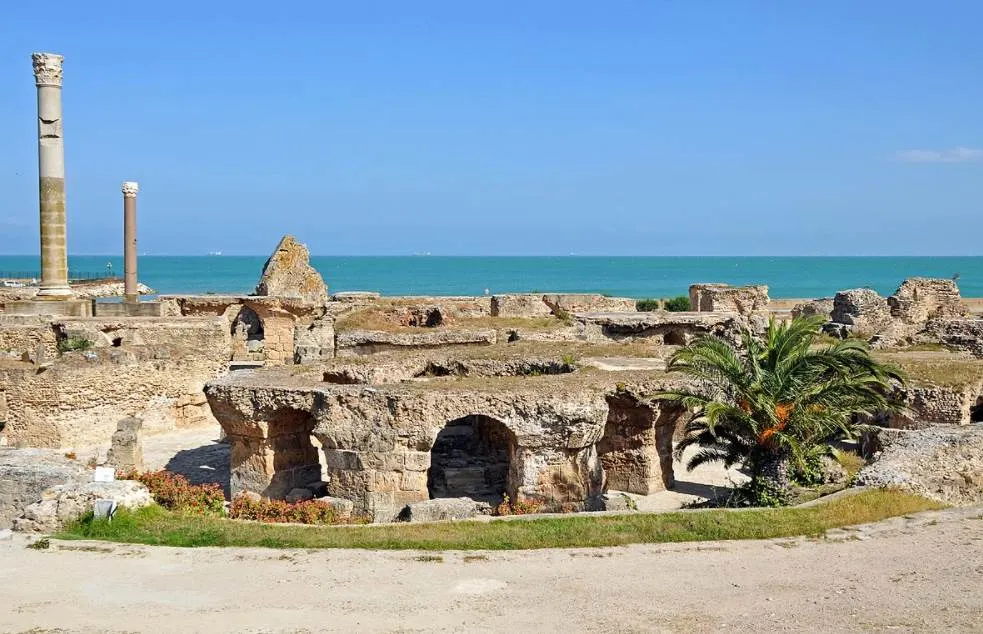
7. Roman Thermae of Maximinus – Braga, Portugal
The northwestern part of the Iberian peninsula was part of the Roman province of Gallaecia, which in turn was part of the larger Roman region called Hispania.
The capital of this province was Bracara Augusta, a city today known as Braga in the northwest of Portugal. Just like any other provincial city of the Roman Empire, its city featured a bathing complex known as the Roman Thermae of Maximinus.
The original version of the complex was constructed in the second half of the 1st century B.C. It was completely remodeled in the 3rd century A.D. and a theater was added nearby as well.
It was built on top of a hill in the city, and even though many parts of the structure have been excavated, the complete plan of the structure remains unknown, quite remarkable for a facility that was operational until approximately the 5th century.
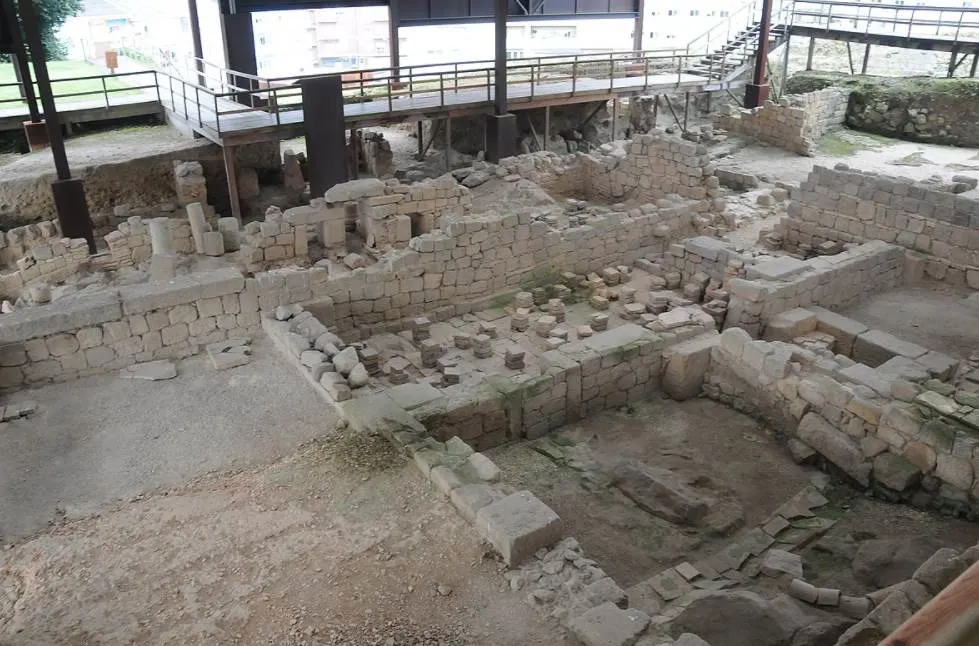
8. Baths of Ancyra – Ankara, Turkey
The Baths of Ancyra were located in the modern-day city of Ankara, the capital of Turkey. They were but on the ancient city of Ancyra which was the capital of the Roman province of Galatia.
This city gained importance because of its strategic location as the Roman Empire expanded to the east. That’s why this massive bathing complex was built in the early 3rd century A.D. during the reign of Emperor Caracalla.
The ancient entertainment venue was uncovered during a large excavation project that was conducted between 1937 and 1944. This uncovered the scale on which this complex was built.
The wrestling court or “palaestra”, which is the first part you’ll visit at this huge open-air museum, was surrounded by a total of 128 large marble columns, something that tells you everything about how monumental this complex was.
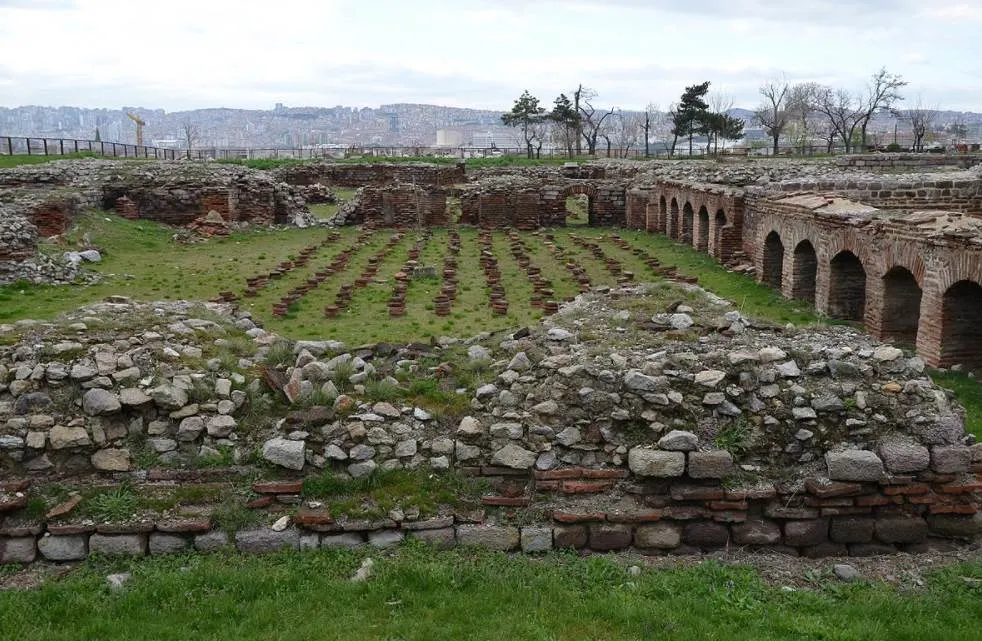
9. Op de Thermen – Maastricht, Netherlands
Even though nothing about this public square in the Dutch city of Maastricht called “Op de Thermen” would initially make you assume that this was the location of an ancient Roman bathing complex, the name does hint at it.
That’s because “Op de Thermen” literally translates to “On top of the Thermae” which refers to the fact that the square was built on top of the ruins of this Roman facility.
The surprising discovery was made during the 1840s when digging for a cellar in the area uncovered the remains of an ancient structure. It was quickly determined that these were the remains of a bathhouse dating back to the 2nd century A.D.
The entire complex was uncovered during an excavation conducted between 1963 and 1965. This determined that the complex had a length of about 40 meters (131 feet). Today, the square feature markings showing the size of the bathhouse below.
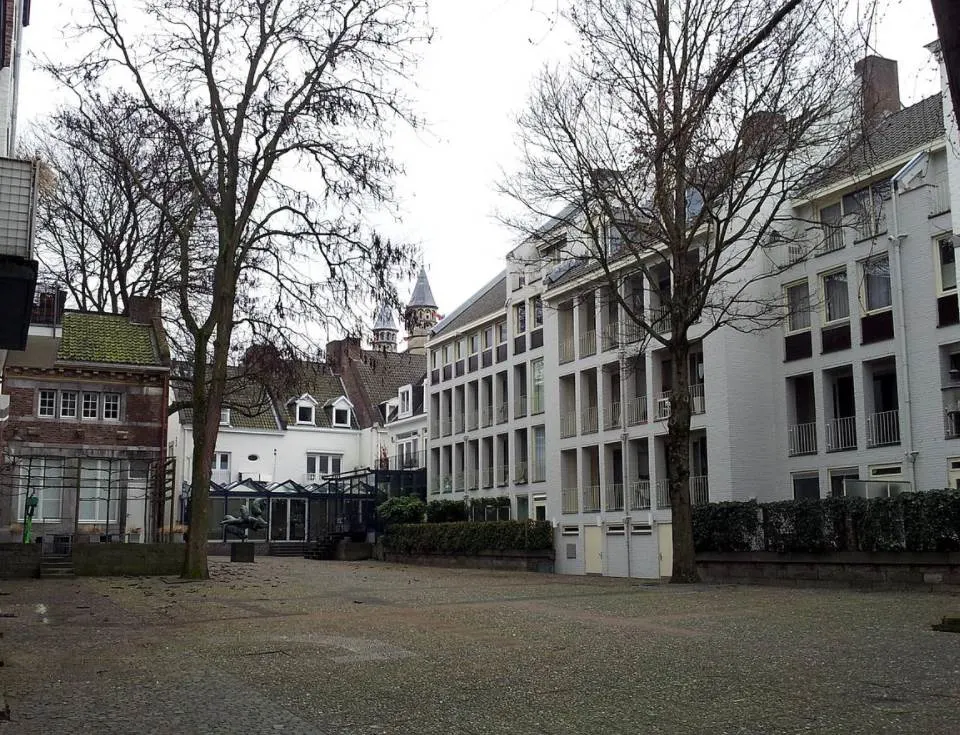
10. Roman Thermae – Varna, Bulgaria
The Roman Thermae in Varna in the northeastern part of Bulgaria is another ruined complex located within the limits of a modern-day city. Varna is situated near the Black Sea and is an important port city in the country.
This ancient Greek city only became part of the Roman Empire in 15 A.D. and wasn’t as important as many other cities on this list. This just emphasizes the extent of the development of all parts of the Roman Empire.
The city was part of the Roman province of Moesia and the bathing facility was constructed near the end of the 2nd century. Unlike many other structures, they were only in use for about a century and already fell into ruin in the late 3rd century.
This makes it all the more surprising that these baths are considered to be the 4th-largest Roman baths ever built in Europe, covering an area of about 7,000 square meters (75,000 square feet).
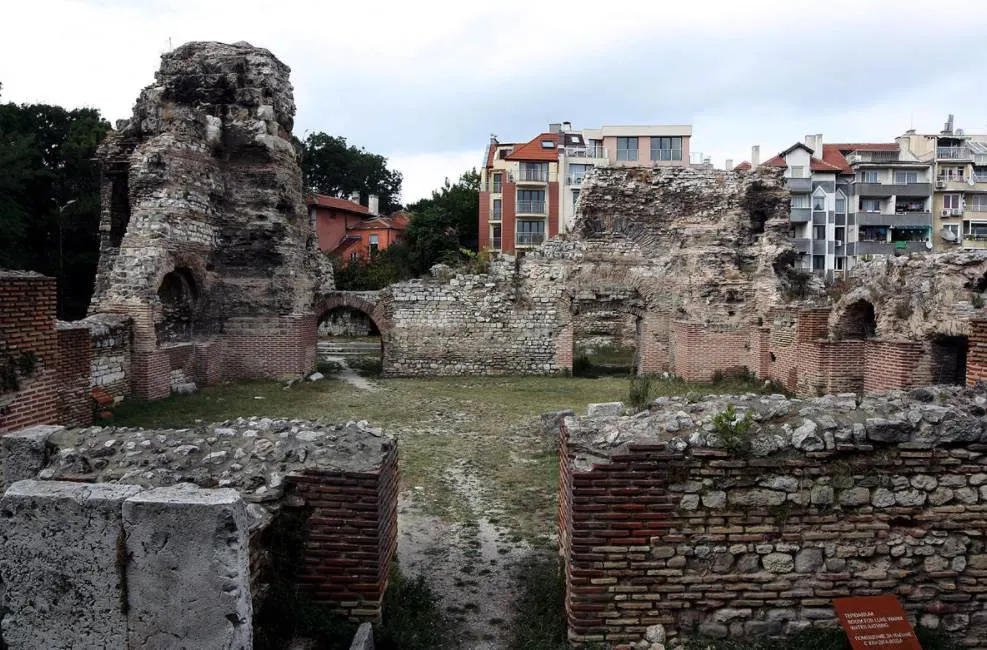
11. Baths of Trajan, Rome Italy
The Baths of Trajan were another large complex of structures that were constructed during the early 2nd century. They were commissioned by Roman Emperor Trajan and completed between 104 and 109 A.D.
The complex was built on the southern slope of Oppian Hill which was situated on the outskirts of Rome back then. Just like many other Imperial baths, they served as a social gathering spot for Roman citizens.
Bathing wasn’t the only thing you could do here because it also featured a gym and two libraries, one in Latin and one in Greek. The baths eventually fell in disuse in the early 5th century.
Not much remains of this huge structure today, but the southwestern exedra which housed both libraries of the complex still stands, quite an intriguing sight.
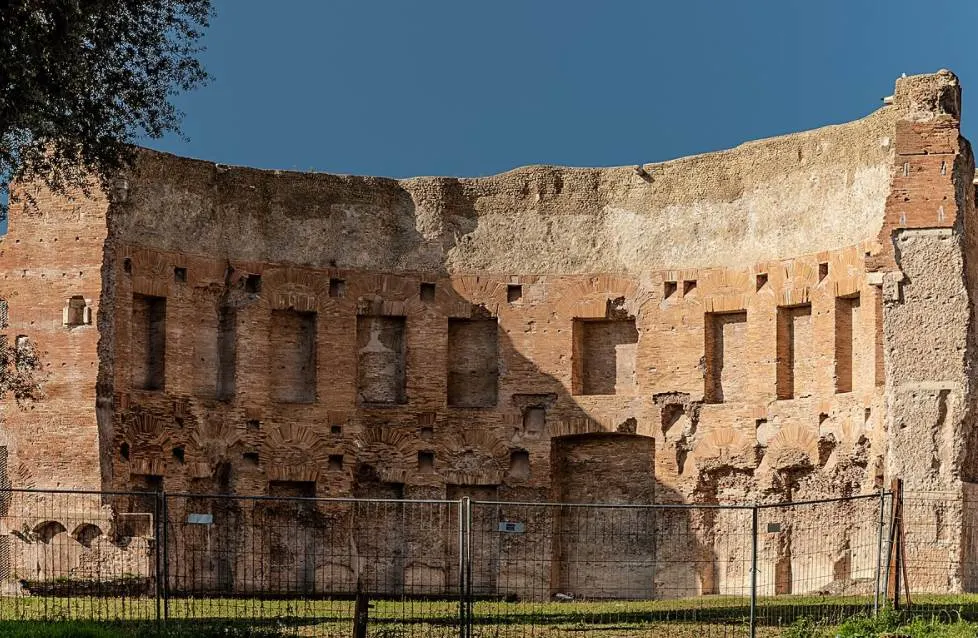
12. Roman Berytus – Beirut, Lebanon
Even though Beirut in Lebanon is a city with a lot of history, it’s also a modern sprawling city with modern architecture. This makes it all the more surprising that right in downtown Beirut you can find the ruins of a Roman bathhouse.
This ancient complex, of which only ruins remain, is surrounded by government buildings and was only discovered in the late 1960s. The archaeological site was seriously renovated during the 1990s and is now a popular attraction in the city.
This isn’t the only bathhouse that was created here, though, as the city featured 4 of these complexes, 1 of which was constructed during the reign of Emperor Augustus in the late 1st century B.C.
The main reason why the baths in Berytus were destroyed was because of an earthquake that happened in the year 551 A.D.
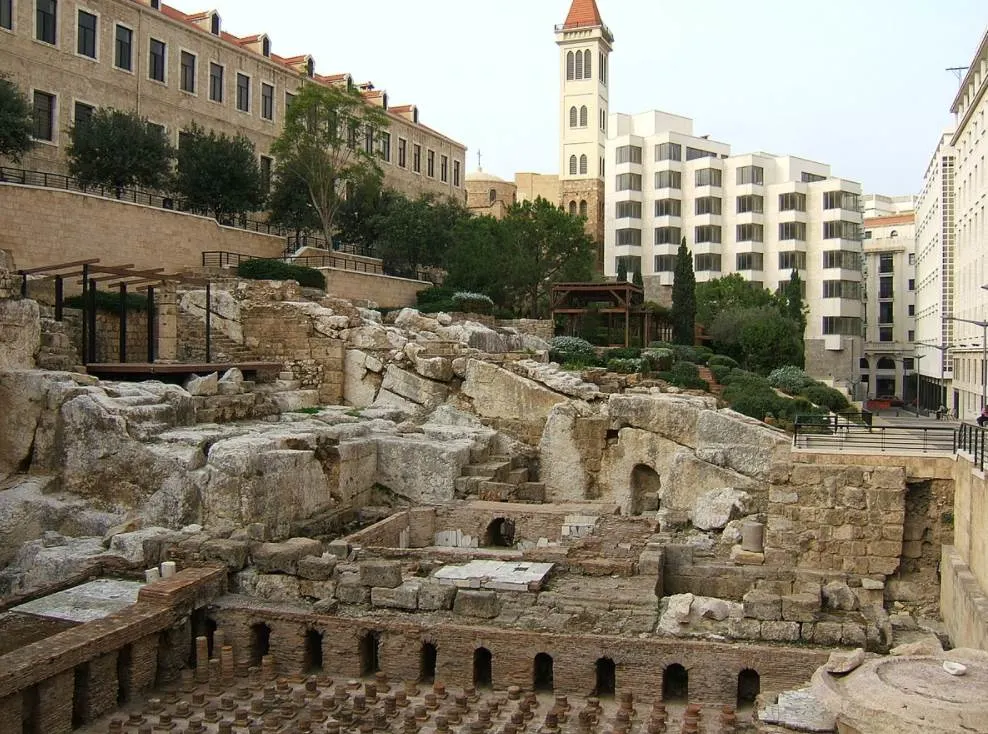
13. Taurine Baths – Civitavecchia, Italy
A huge bathhouse was built just outside of Rome in a city known today as Civitavecchia. These baths are referred to as the “Taurine Baths” and date back to the Republican era of Rome in the 1st century B.C.
The name of the baths refers to a town just nearby that doesn’t exist anymore called “Aquae Tauri.” Even though the original baths were rather humble, they were greatly expanded during the reign of Emperor Hadrian in the 2nd century A.D.
This complex was operational from its establishment in the year 86 B.C. until the 6th century when most aqueducts in the area were destroyed by the Goths.
Just like many other Imperial bathing complexes, this one featured a wide variety of other entertainment facilities, including a library and other spaces for Romans to socialize.

14. Badenweiler Baths – Baden-Württemberg, Germany
Baden-Württemberg is the German version of the city of Bath in England, mainly because the town was named after the ruins of the Roman bathing complex that is located here.
The ruins of this complex are considered to be some of the best-preserved north of the Alps and are a major tourist attraction in this upscale Spa resort in the southwest of Germany.
The layout of the bathing complex was retained and the floors inside the hot and cold swimming pools are still the original ones which are quite amazing.
The region is renowned for its hot springs, and when the bathing complex was rediscovered in the late 18th century, the tradition of bathing was reintroduced in the region as well. Neoclassical bathing complexes replaced the ancient ruins of the Roman Empire.
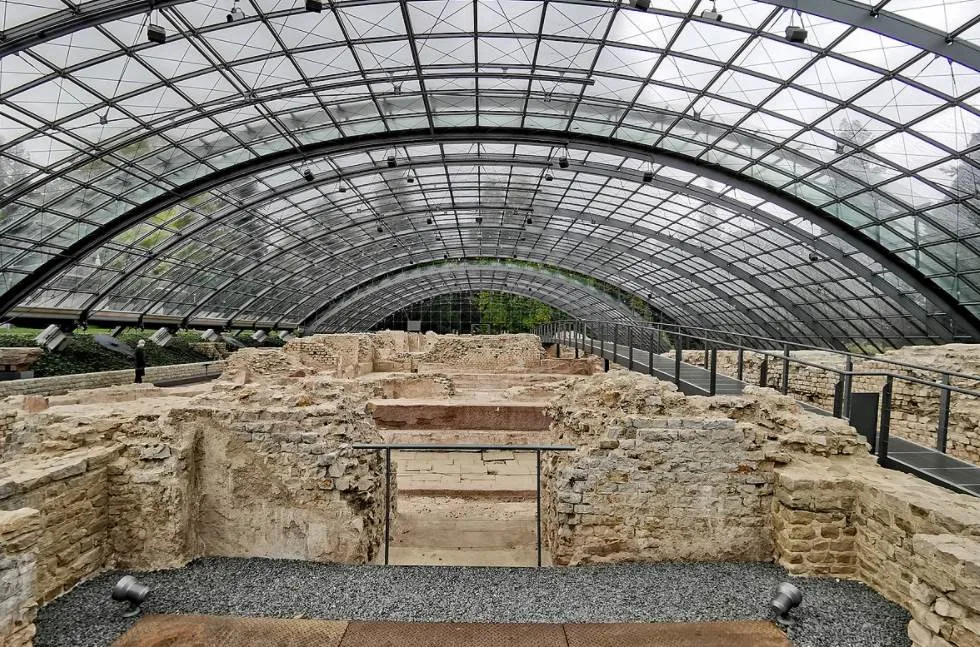
15. Hammam Essalihine – El Hamma, Algeria
While the towns in Germany and England have turned their ancient ruins into a modern-day facility and tourist attraction, the people in Algeria had something completely else in mind.
At Hamman Essalihine, the ancient Roman bathing complex was partially renovated and still serves as a swimming pool today, just like how it was nearly 2,000 years ago.
The name of this Roman bathhouse translates to “The Bath of the Righteous” but was originally known as the “Aquae Flavianae.” This is a reference to the Flavian Dynasty that ruled over the Roman Empire during the late 1st century A.D.
Yes, this complex in modern-day Algeria was built around the same time as the Colosseum in Rome and is still active today, simply astounding!

